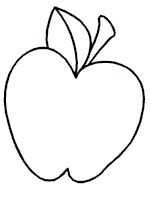Warm up exercises to bypass your catalogue!
First of all, a disclaimer -- I used to think that to be a good drawer, I had to draw everything perfect from my own imagination.
That couldn't be further from the truth!
In fact, throughout history, artists have always used sources -- photos, models, and even camera obscura methods, a process that projects the image right onto the canvas!
The thing that makes your art different is your idea -- and you have a ton of those.
But to become an accurate drawer, you have to learn how to see differently.
The issue for you will be bypassing your catalogue.
Your brain has been cataloguing things since you were born; this is of course very important. You have to know what is an apple and what is a lion, and you have to know it quick! So, your brain saves just the most basic of clues and stores it away for later.



But then, you learn how to use a pencil, and when you try to draw an apple, or an eye, or a hand...
Your brain says "I GOT THIS I GOT THIS"
and proceeds to draw what it THINKS a hand or an eye or an apple looks like....

...Which turns out to be pretty simplistic.
Well, fear not! There are ways to train your brain to allow your right brain -- the creative, daydreaming part of you -- to take control and draw what you see.
Here are some exercises to help your brain calm down, so that your eye and your hand can communicate freely.
The gesture drawing
AHH! The beautiful gesture drawing.
Look at the model posing right in front of you -- nothing is as quick and exciting as life drawing, and gesture drawings are the best because they are FAST...
There you go, moving your pencil so fast, you don't even allow for your brain to come up with silly ideas like, "HEY I KNOW HOW TO DRAW THIS" -- No way, Jose!
You are in charge 100%. Don't let your brain go digging into the catalogue -- use your eyes and your arms and your shoulders (and your pencil too, of course) to create a dynamic picture of your model. And, like the video below shows, you can use gesture drawings for ANYTHING!
Step up your gesture drawing by watching the second video, where you can understand more about the movement lines or lines of action, which can be most easily seen on living forms but which are found in many objects too.
Now, let's do some gesture drawings together! Get ready because the models move very fast!
The negative space drawing: "Not a chair"
A key to drawing realistically is to start drawing the shapes around your form.
You can use this with anything; I like to pile lots of objects and try to draw all the different negative spaces.
The secret is to look only on the empty spaces in between the objects.
Look how the artist below focuses on the rectangular spaces in between each leg to reproduce a perfect not-a-stool -- they don't match perfectly, but he stuck with the exercise until the end, and it looks so lively!
After we watch the video below, let's try to draw our own "Not a chair"!!!
The contour drawing
The blind contour drawing
If you can't see what you drawing, then your brain can't take over.
Blind contour drawing creates a dialogue between your hand and your eye, bypassing your logical brain and your catalogue.
This is a very effective exercise to train your brain into doing what you want!
Before you can draw accurately, you must first learn how to see.
Let's try drawing our hands -- don't peek!